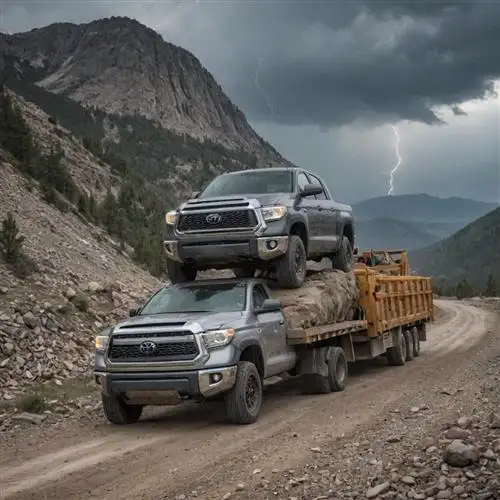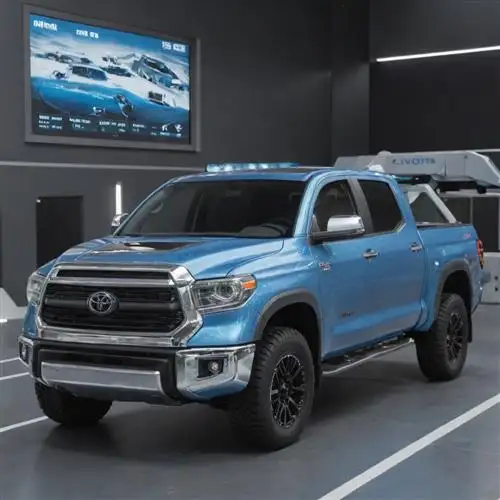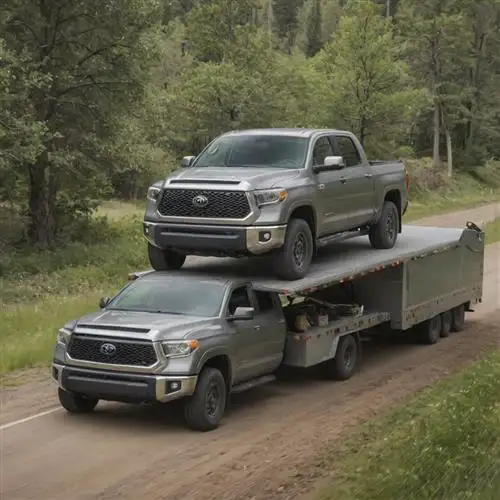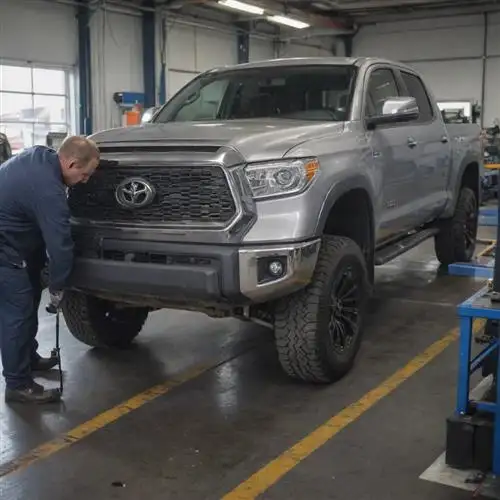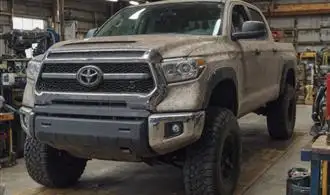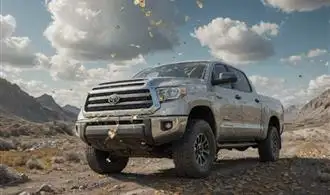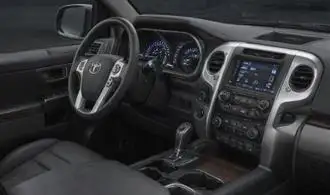
Towing Capacity Breakdown
The Toyota Tundra is renowned for its impressive towing capabilities, making it a popular choice for those who require a reliable and capable pickup truck. To fully understand the Tundra's towing prowess, it's essential to delve into the details of its towing capacity.
The Tundra's maximum towing capacity varies depending on the specific model and configuration. The base model Tundra can tow up to 8,300 pounds, while the more powerful versions can handle up to 10,200 pounds. This impressive towing capacity is achieved through a combination of the Tundra's robust frame, powerful engine options, and advanced towing technology.
When it comes to towing capacity, the Tundra offers a range of engine choices, each with its own unique capabilities. The standard 5.7-liter V8 engine, for instance, delivers a maximum towing capacity of 10,200 pounds, making it a top choice for those who need to haul heavy loads. The available 3.5-liter twin-turbo V6 engine, on the other hand, can tow up to 9,900 pounds, offering a balance of power and efficiency.
In addition to the engine, the Tundra's towing capabilities are also influenced by its payload capacity and the weight distribution of the load. The Tundra's payload capacity can reach up to 1,730 pounds, allowing it to handle a variety of towing needs, from recreational trailers to work-related equipment.
To further enhance the Tundra's towing performance, Toyota has equipped the truck with a range of advanced towing technologies. These include a Trailer Sway Control system, which helps to maintain stability and control when towing, and a Trailer Brake Controller, which allows the driver to adjust the trailer's braking force for improved stopping power.
The Tundra's towing capabilities are not just about the raw numbers; they're also about the truck's overall handling and stability when towing. The Tundra's robust suspension and steering systems work in harmony to provide a smooth and confident towing experience, even on challenging terrain or in inclement weather conditions.
Terrain Mastery for Towing
The Toyota Tundra is a force to be reckoned with when it comes to towing and navigating challenging terrain. Its robust design, advanced engineering, and unparalleled off-road capabilities make it the go-to choice for those who demand the utmost in performance and reliability. Whether you're towing a heavy trailer through winding mountain roads or traversing rugged terrain with your gear in tow, the Tundra is ready to rise to the occasion.
At the heart of the Tundra's terrain mastery lies its impressive four-wheel-drive system. With the ability to seamlessly transition between two-wheel and four-wheel drive, the Tundra can adapt to any environment, ensuring optimal traction and control. The available electronically controlled locking rear differential further enhances the Tundra's off-road prowess, allowing the driver to tackle even the most treacherous conditions with confidence.
The Tundra's suspension system is another key factor in its ability to conquer any terrain. Featuring a coil-spring independent front suspension and a robust rear suspension, the Tundra provides a smooth and stable ride, even when towing heavy loads. This advanced suspension system also helps to maintain composure and control, even when navigating steep inclines, rocky terrain, or uneven surfaces.
The Tundra's impressive towing capacity is further bolstered by its powerful engine options. Whether you choose the robust V8 or the efficient turbocharged V6, the Tundra delivers the raw power and torque necessary to tackle even the most challenging towing tasks. With the ability to haul up to 12,000 pounds, the Tundra can handle everything from heavy-duty trailers to oversized recreational vehicles with ease.
But the Tundra's capabilities extend beyond just raw power. Its advanced technological features, such as the Trailer Backup Assist system and the available Multi-Terrain Select, make towing and off-road driving a breeze. The Trailer Backup Assist system allows you to easily maneuver your trailer into tight spaces, while the Multi-Terrain Select provides various driving modes to optimize traction and performance based on the terrain.
Towing Technology and Safety Features
The Toyota Tundra is renowned for its exceptional towing capabilities, thanks to a suite of advanced technologies and safety features that ensure drivers can tackle even the most demanding towing tasks with confidence. At the heart of the Tundra's towing prowess is its powerful engine lineup, which provides ample torque and horsepower to effortlessly haul heavy loads.
One of the standout features of the Tundra's towing system is the Trailer Sway Control (TSC) function. This intelligent system monitors the movement of the trailer and, if it detects any sway, automatically applies the brakes on the appropriate wheels to stabilize the trailer and prevent it from becoming unmanageable. This not only enhances the safety of the towing experience but also helps to reduce driver fatigue and stress.
The Tundra also boasts a Trailer Brake Controller (TBC), which allows the driver to adjust the brake force applied to the trailer's brakes. This feature is particularly useful when towing heavy or large trailers, as it enables the driver to fine-tune the braking balance between the truck and the trailer, ensuring smooth and controlled stops.
Another impressive towing technology featured in the Tundra is the Blind Spot Monitor with Rear Cross-Traffic Alert. This system uses radar sensors to detect vehicles in the Tundra's blind spots, including those that may be obscured by the trailer. When a vehicle is detected, the system will provide a visual alert in the side mirror, helping the driver to make safe lane changes and maneuvers.
The Tundra's towing capabilities are further enhanced by its advanced camera system, which includes a Backup Camera with Projected Path. This feature displays dynamic guidelines on the rearview camera display, allowing the driver to easily align the trailer with the hitch receiver and navigate tight spaces. The system also includes a Panoramic View Monitor, which provides a 360-degree view around the vehicle, making it easier to maneuver the Tundra and trailer in confined areas.
Optimizing Towing Efficiency
The Toyota Tundra's unparalleled towing capabilities are a testament to its engineering prowess. By understanding the factors that contribute to efficient towing, Tundra owners can maximize the performance and versatility of this exceptional pickup. One of the key elements in optimizing towing efficiency is the proper distribution of weight. Ensuring the load is balanced and centered on the truck's frame can significantly improve handling, stability, and fuel economy. Additionally, utilizing the Tundra's integrated trailer brake controller and sway control features can enhance the driver's control and confidence while towing.
Another important aspect of towing efficiency is the selection of the appropriate hitch and trailer. The Tundra's impressive towing capacity, which can reach up to 12,000 pounds, requires a properly rated hitch and trailer to ensure safe and efficient operation. Investing in a high-quality, weight-distributing hitch can help distribute the load evenly, reducing strain on the vehicle and improving overall stability. Regular maintenance of the hitch, trailer, and associated components is also crucial for maintaining optimal towing performance.
Aerodynamics play a crucial role in towing efficiency as well. By minimizing wind resistance and drag, the Tundra can achieve better fuel economy and reduce strain on the engine while towing. Accessories such as tailgate spoilers, front air dams, and aerodynamic mirrors can contribute to improved airflow and reduced turbulence, further enhancing the Tundra's towing capabilities.
Proper weight distribution and hitch selection are not the only factors to consider when optimizing towing efficiency. How to Maintain Your Tundra Without Neglecting Other Aspects of Life also emphasizes the importance of regular maintenance and inspections to ensure the Tundra's towing system remains in top condition. By staying on top of maintenance tasks, such as checking tire pressure, lubricating moving parts, and inspecting the trailer's lights and brakes, Tundra owners can maintain the truck's towing prowess and avoid potential issues on the road.
Tundra Towing Maintenance and Care
Towing with a Toyota Tundra requires meticulous maintenance and care to ensure optimal performance and safety. Regularly inspecting and servicing the vehicle's towing components is crucial. This includes checking the hitch, trailer wiring, and brake controller to ensure they are in proper working condition. Failure to maintain these systems can lead to dangerous situations on the road, compromising the Tundra's towing capabilities.
Proper tire maintenance is another essential aspect of Tundra towing. Ensuring the tires are properly inflated and in good condition is crucial for maintaining stability and control when hauling heavy loads. Rotating the tires as recommended by the manufacturer can help extend their lifespan and improve traction, which is particularly important when towing in adverse weather conditions.
Regularly inspecting the Tundra's suspension components, such as the shocks and springs, is also vital. These components play a critical role in absorbing the additional weight and forces experienced during towing, and their proper functioning is essential for maintaining a smooth, stable ride. Replacing worn or damaged suspension parts can significantly improve the Tundra's towing performance and safety.
Another important factor to consider is the Tundra's braking system. Ensuring the brakes are well-maintained and functioning correctly is crucial for safely controlling the vehicle and its trailer during towing. This includes regularly inspecting and replacing worn brake pads, rotors, and other components as needed.
To maximize the Tundra's towing capabilities, it is also important to pay attention to the vehicle's engine and transmission maintenance. Regular oil changes, fluid flushes, and other recommended maintenance tasks can help ensure the powertrain is operating at peak efficiency, providing the necessary power and torque for towing heavy loads.


